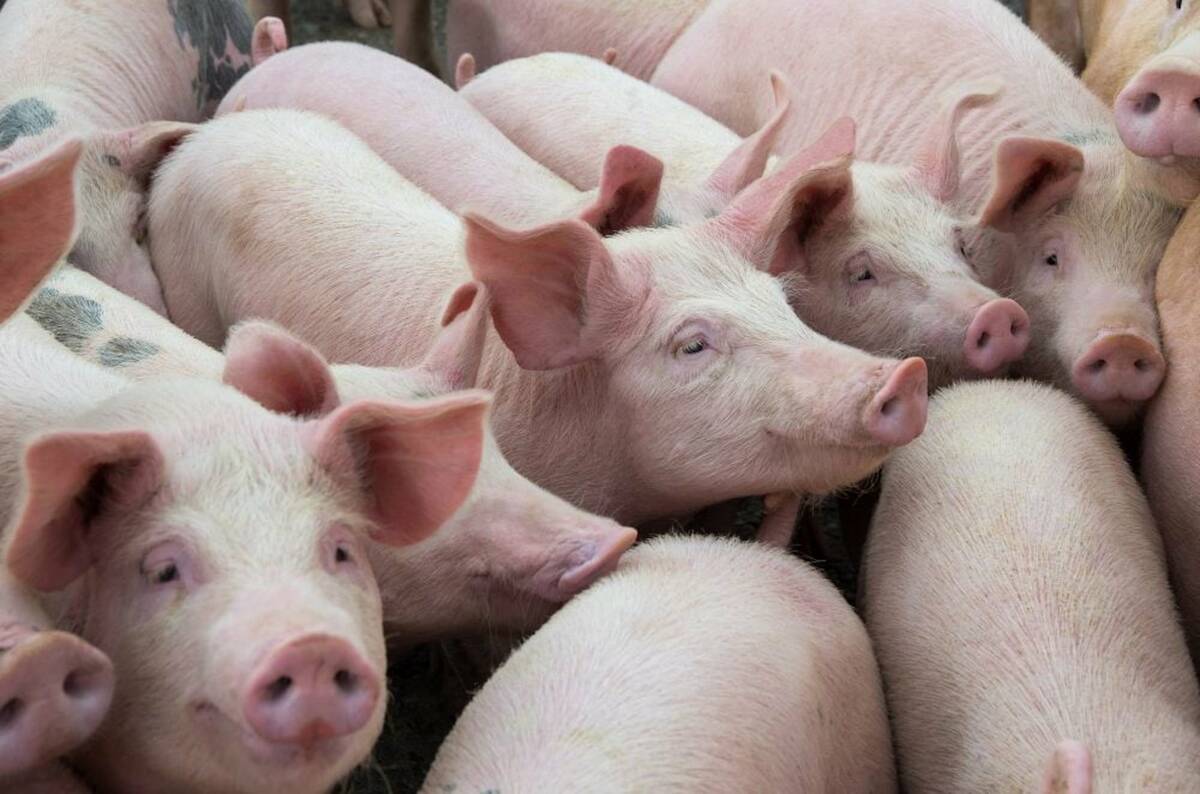Western Canadian farmers are harvesting a spring wheat crop that looks to be well above average in protein content, but they are unlikely to command much of the usual premium this autumn due to abundant supplies, analysts say.
After two years of flooding, Western Canada is set to produce its second-biggest all-wheat crop in 16 years. Growing conditions have been mostly favourable, but stress caused by mid-summer heat helped boost protein content by shrinking kernels and reducing their starch production.
"It’s high, and in some cases, extremely high," said Jonathon Driedger, market analyst for FarmLink Marketing Solutions in Winnipeg. "There’s no shortage of protein."
Read Also

U.S. livestock: Hogs rise ahead of ‘Hogs and Pigs’ report
Chicago cattle futures continued to inch upward on Monday. Hogs also rose in anticipation of Tuesday’s Hogs and Pigs report….
The United States is the biggest importer of Canadian wheat, but its winter wheat crop was relatively high in protein this year, Driedger said, and the northern Plains’ spring wheat production this year is expected to be larger than last year.
The premium of nearby Minneapolis spring wheat futures to Chicago soft red winter wheat was around 73 cents per bushel on Tuesday, recovering somewhat after hitting its lowest level in late August since October 2010.
A year ago, the Minneapolis spring wheat premium was more than three times the current level.
The loss of traditional premium levels for high protein are unlikely to dampen farmers’ mood much, however, with big crops being harvested across much of the Prairies and prices high, due to drought harming corn in the U.S. Midwest, and pulling up other crop prices, said Chuck Penner, analyst at LeftField Commodity Research in Winnipeg.
Canada is the biggest exporter of spring wheat, used for baking.
Western Canadian spring wheat averaged protein content of 13.1 per cent last year across all milling grades, down from the previous 10-year average of 13.7 per cent, according to the Canadian Grain Commission (CGC).
This year’s average spring wheat protein content is 14.2 per cent so far, based on 420 samples of all grades, mostly from Manitoba where the harvest is advanced, according to the CGC.
Protein levels are important to the fermentation process in making bread, said Nancy Edwards, program manager of bread wheat research for the CGC.
Millers often blend lower- and higher-protein wheats to achieve an average protein content specified by a customer.
In contrast to high-protein, top-grade milling wheat, demand is stronger than usual for feed wheat, the lowest-priced wheat grade, Penner said. Farmers have used feed wheat this year as a substitute for feeding livestock in parts of the U.S. because corn supplies are lower than expected.
For the most part, Canadian millers aren’t eager to buy wheat with higher than 13.5 per cent protein, since it doesn’t perform any better above that level, said Doug Hilderman, NorAg Resources’ vice-president of western grain merchandising at West St. Paul, Man. "You can’t turn that extra protein into money."
Canada’s two biggest millers are Archer Daniels Midland and P+H Milling Group.
— Rod Nickel writes for Reuters from Winnipeg.














